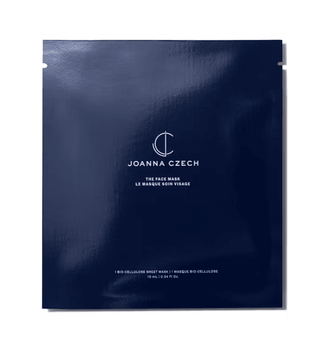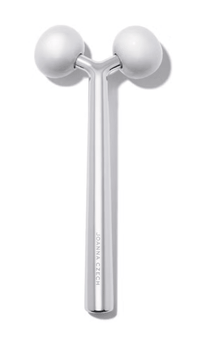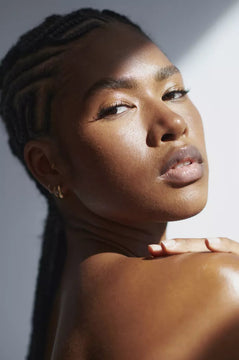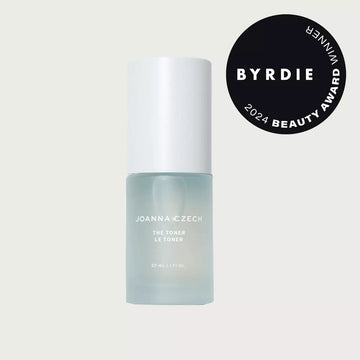Remember that conversation between two of our favorite facialists named Joanna? You know, the one where Joanna Czech casually mentioned that there might only be three peptides that actually work. Which are they, and how are we supposed to know they’re working? “I mean, we can go into peptides,” Joanna alluded—to which we say, yes, you cheeky master facialist you, let’s! But before we do, let’s backtrack a little. What the heck are peptides in the first place? And why are they always associated with wrinkles (or a lack of them)? To answer that, we enlisted the help of three dermatologists: Dr. Mona Gohara, Dr. Anne Chapas, and Dr. Howard Murad.
On a cellular level, there's an entire ecosystem of molecular compounds that contribute to how your skin looks and feels. For the purposes of this guide, we're sticking to just two of them: proteins and peptides. “In the simplest terms,” says Dr. Murad, “peptides are the building blocks that make up proteins.” This includes one major protein—collagen. It’s known for keeping skin plump and firm, and our bodies actually produce less of it over time. Dr. Murad adds that decreased collagen production “combined with environmental damage from the sun and pollution is what causes wrinkles to form.” You can check your own skin’s level of collagen by doing a quick test: Using the side of your pointer finger, push up the skin on your cheek. Does it bounce back right away? If it takes a little longer to settle into its original position, you might be experiencing the beginnings of skin laxity, or a decrease in collagen.
So, why don’t we just cut straight to the big boys, the collagen proteins themselves? Why bother with peptides at all? Dr. Murad explains, “While it may seem like applying collagen topically or taking a supplement could be the answer, our bodies are unable to absorb this molecule and can only produce it from within.” Unlike proteins, he says, peptides are “easily absorbed” topically. Then once absorbed, peptides tell your body to produce collagen it can actually use. Dr. Chapas notes, “When applied to the skin, peptides make our fibroblast cells”—AKA cellular collagen factories—“think that our skin is wounded or damaged, and they respond by making more collagen.” Dr. Gohara breaks it down even more simply, saying “I like to tell my patients that they send little texts to collagen to remind it to reproduce.” Imagine: Ping, make more collagen. Ping. Ping!!!
Since fibroblast read receipts don’t exist, you’ll be glad to hear that studies (including this one and this one) have shown skin is actually getting the message. Regular use of peptide-rich skincare results in the diminished appearance of fine lines on the face and around the eyes. It can also be preventative. “I often recommend peptides for use on the lower face, neck and chest to prevent skin laxity,” suggests Dr. Chapas. Working them into your existing routine is easy—you probably don’t need to change anything up too much. “Peptides can also be used with other anti-aging ingredients,” says Dr. Chapas, “such as antioxidants or retinol.”
As for those three peptides Joanna Czech alluded to earlier? Well, they’re actually peptide compounds. She cites Argireline, Matrixyl 3000, and Dermaxyl. To that list, Dr. Gohara adds pentapeptides, palmitoyl oligopeptide, and copper peptides, which are peptides combined with copper molecules. “Copper peptides are great for regeneration and healing,” recommends Dr. Gohara. That’s a total of six peptides trusted by aestheticians and derms—any of which could be your retinol's new best friend. Miracle in a bottle? Probably not. An easy step to plumper, firmer skin? Absolutely.




